Shopify Chatbot Complete Guide 2025: Apps & Setup

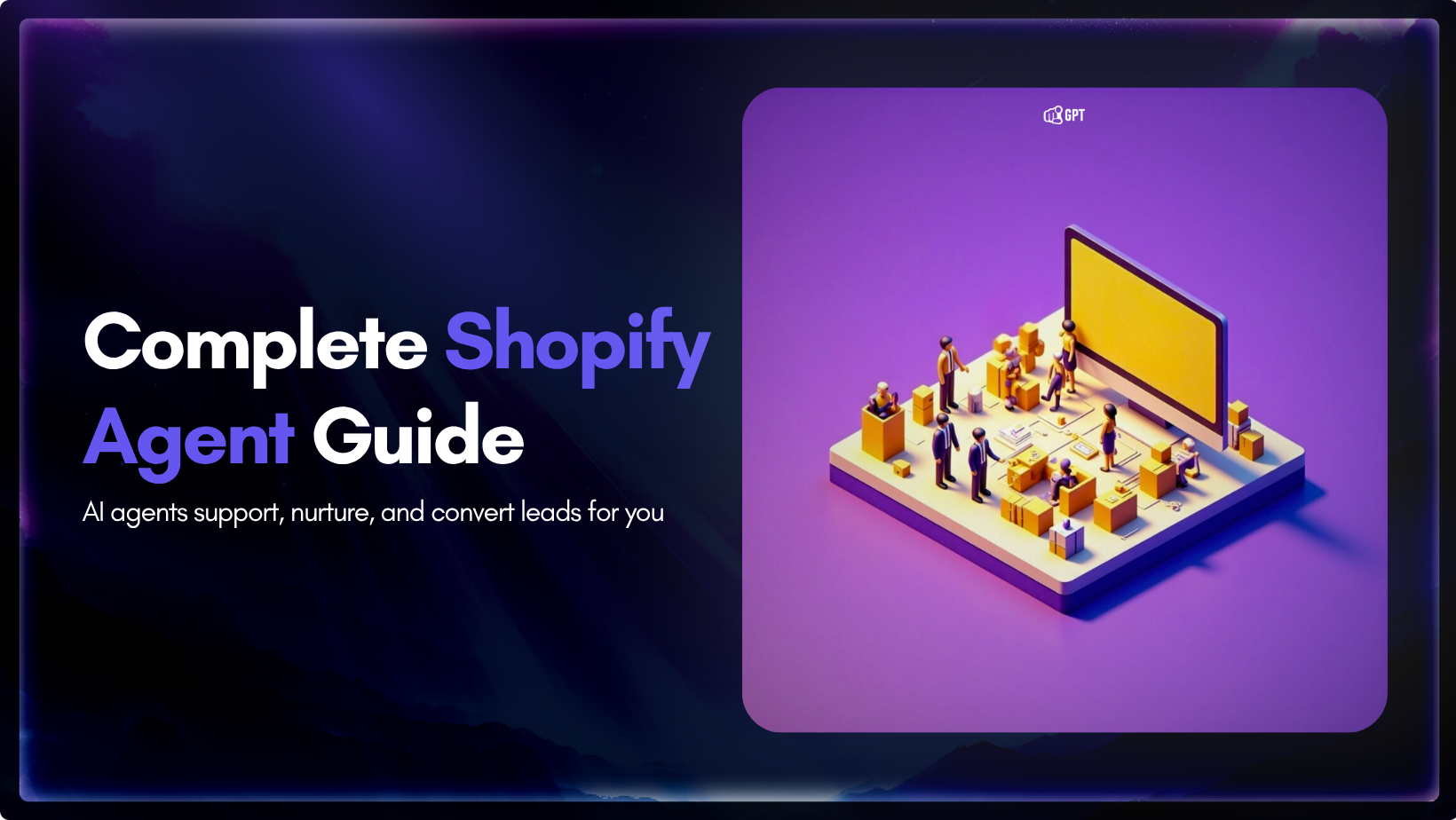
Every successful Shopify store eventually reaches a moment where growth depends on how fast and better you support, not how much you sell. A customer who gets help in minutes is far more likely to buy than one waiting for a reply. That’s where intelligent ai agents has quietly become the new standard for ecommerce support.
An AI agent built for Shopify does more than answer questions. It helps customers compare products, check stock, or continue a checkout they paused earlier. It creates the feeling of personal attention without adding more people to your team.
The latest generation of Shopify chatbots is trained to understand what customers mean, not just what they type. They draw from your store data in real time and respond with accuracy that builds trust. The result is faster resolutions, smoother conversations, and higher conversions across every channel.
In this guide, we’ll look at how top-performing Shopify stores use AI chatbots to improve response speed, lift conversions, and deliver the kind of shopping experience today’s buyers expect.

AI agents are intelligent software systems that can understand customer requests, make decisions, and take actions within your Shopify store without constant human supervision.
These agents connect directly to your store’s systems, allowing them to access real-time data and execute tasks autonomously. When a customer asks about their order status, the agent retrieves the specific order from your Shopify database, checks the shipping carrier’s tracking information, and provides accurate delivery details.
AI agents operate on three core capabilities:
AI agents evaluate context and make decisions on their own. They assess customer history, current inventory, order status, and your business rules to determine the appropriate response. This allows them to handle new situations without being explicitly programmed for every scenario, adapting their actions based on each customer interaction.
For your Shopify store, this means customers get immediate, accurate help at any time, while your team focuses on tasks that genuinely need human expertise.
Related Reading:
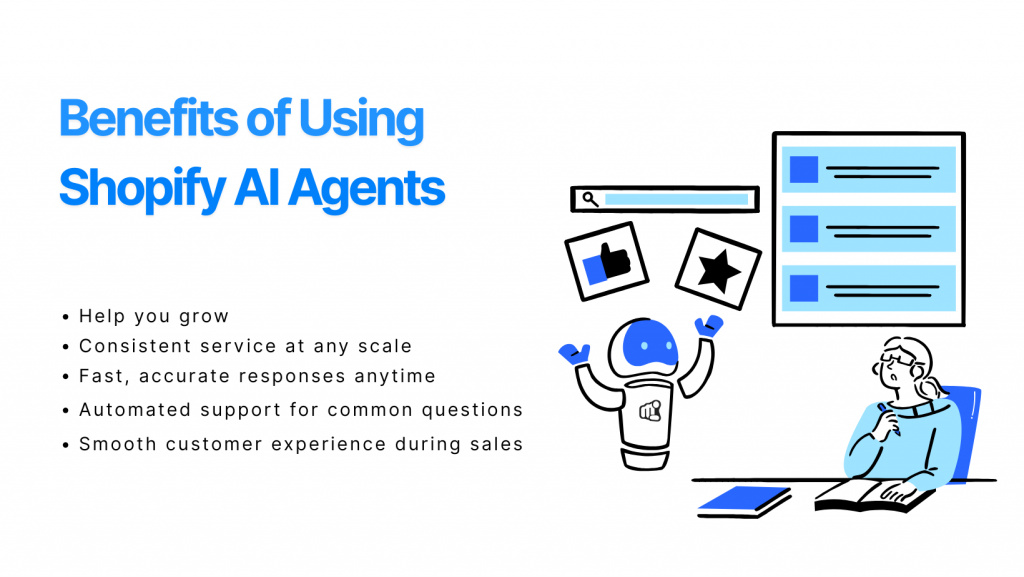
The most immediate change you’ll notice after adding an AI chatbot to your Shopify store is what happens during your busiest hours. Product launches, flash sales, holiday traffic: these are the moments when customer questions flood in faster than any team can answer. An AI chatbot handles all of them simultaneously. Your customers get instant answers while your support team stays focused on situations that genuinely need their expertise.
A significant portion of online shopping happens late at night or early morning when people are browsing from their phones. These shoppers have questions right now, and they’re comparing your store with competitors who might answer faster. Someone wondering if your skincare product works for sensitive skin at midnight gets their answer immediately, right when they’re ready to add it to cart.
What this means for your team’s workload
Most support queries follow predictable patterns:
These questions are necessary but don’t require human judgment. When your chatbot resolves them automatically, your team’s time opens up for complex returns, upset customers, wholesale inquiries, and the kind of personalized service that actually builds loyalty.
Someone asking whether your furniture ships assembled or requires setup is expressing buying intent. They’ve already decided they want it, they just need this one detail confirmed. Every minute they wait is a chance for them to reconsider or check another store. Your chatbot eliminates that gap, keeping them engaged through checkout.
Smart chatbots use what they know about each customer. If someone previously bought a DSLR camera from your store and returns to browse, the chatbot can surface compatible lenses or memory cards based on their actual purchase history. This feels helpful rather than pushy.
When someone hesitates at checkout, there’s usually a reason: unexpected shipping costs, confusion about delivery times, uncertainty about return policies. A chatbot can detect when someone is lingering on the cart page and proactively offer help. Sometimes all it takes is clarifying that returns are free or confirming delivery before a specific date.
Going from 100 to 1,000 daily visitors doesn’t mean you need ten times the support staff. The chatbot handles increased volume without degrading response quality or speed. Your costs stay relatively flat while your revenue grows.
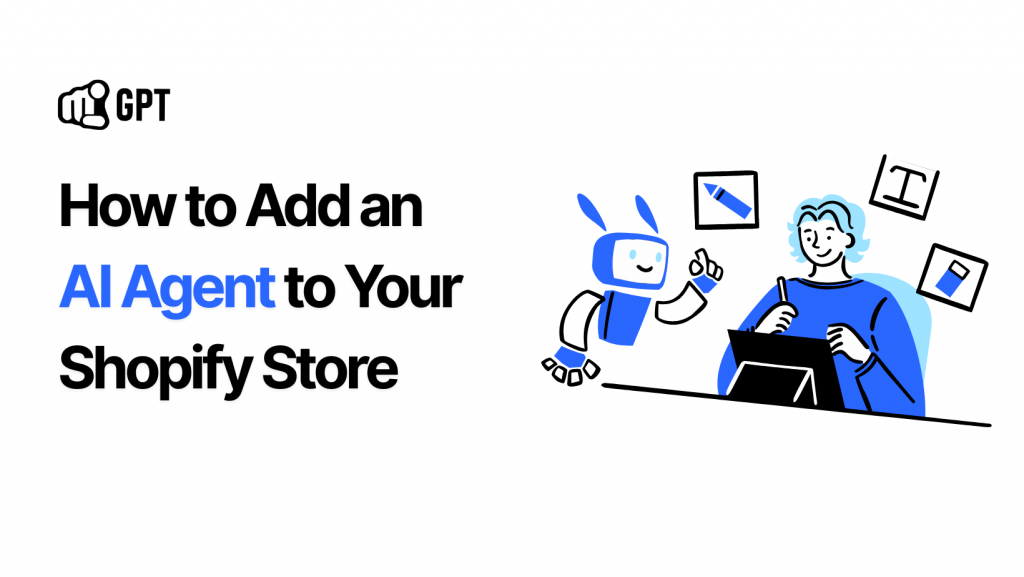
Installing an AI chatbot on your Shopify store takes only 5–15 minutes. You don’t need any coding knowledge or technical setup. The process involves copying a small script from YourGPT chatbot and adding it to your Shopify theme.
Once installed, your chatbot immediately starts responding to customer questions, tracking orders, and assisting with purchases 24/7. Before You Start: What You’ll Need:
Copying the unique JavaScript code that connects your chatbot to your Shopify store.
Detailed instructions:
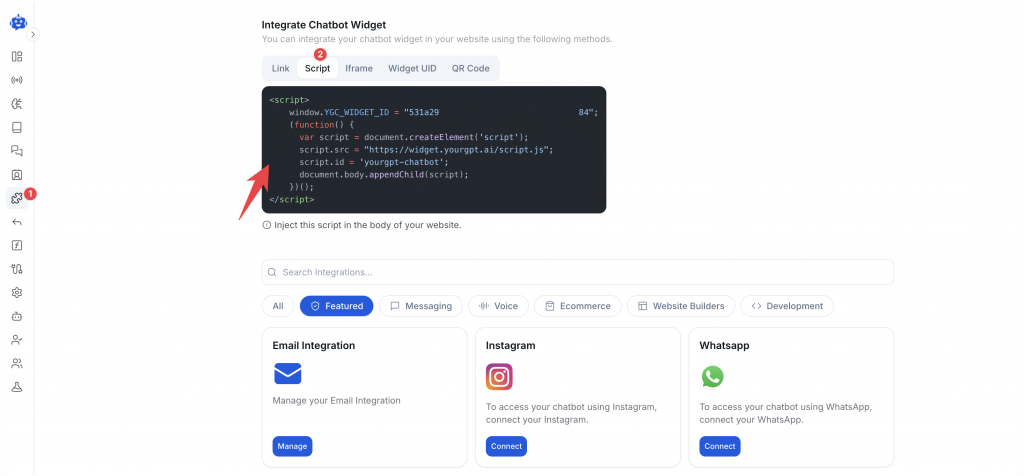
4. Click the “Copy Code” button (or manually select all and copy)
Your agent script is unique to your account. Never share it publicly.
1. Log in to your Shopify admin panel at your-store.myshopify.com/admin
2. Go to your themes:
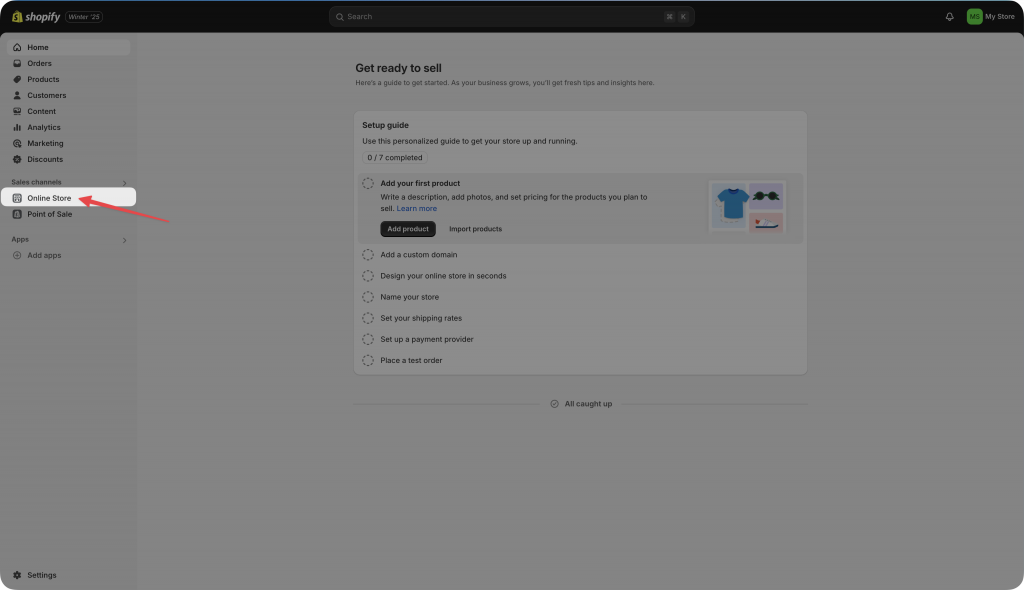
You’ll now access your Shopify theme’s HTML files.
This opens the code editor where you can modify your theme files.
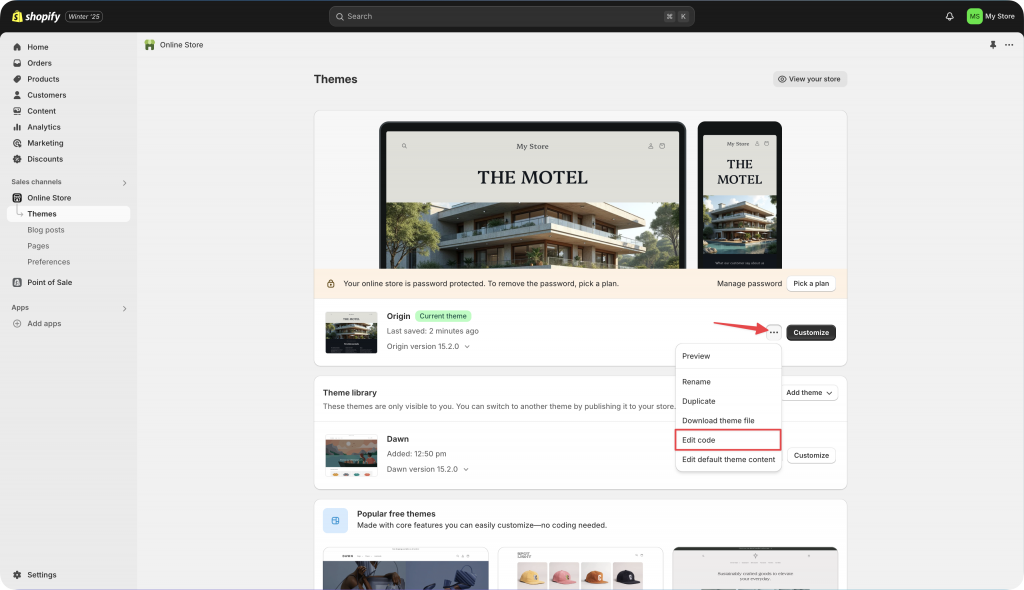
This file acts as the main layout for your store and controls what appears on every page.
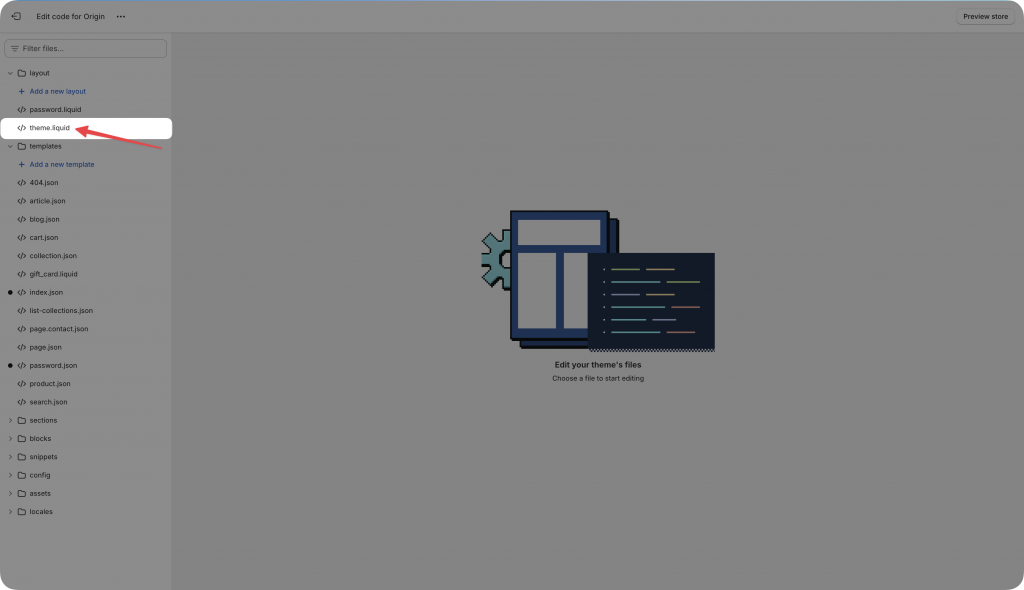
You may also see Shopify Liquid tags like {{ }} or {% %} — these are normal and should not be changed.
Now, paste your chatbot code in the best location for performance. Place your script just before the closing </body> tag.
theme.liquid file.</body> tag.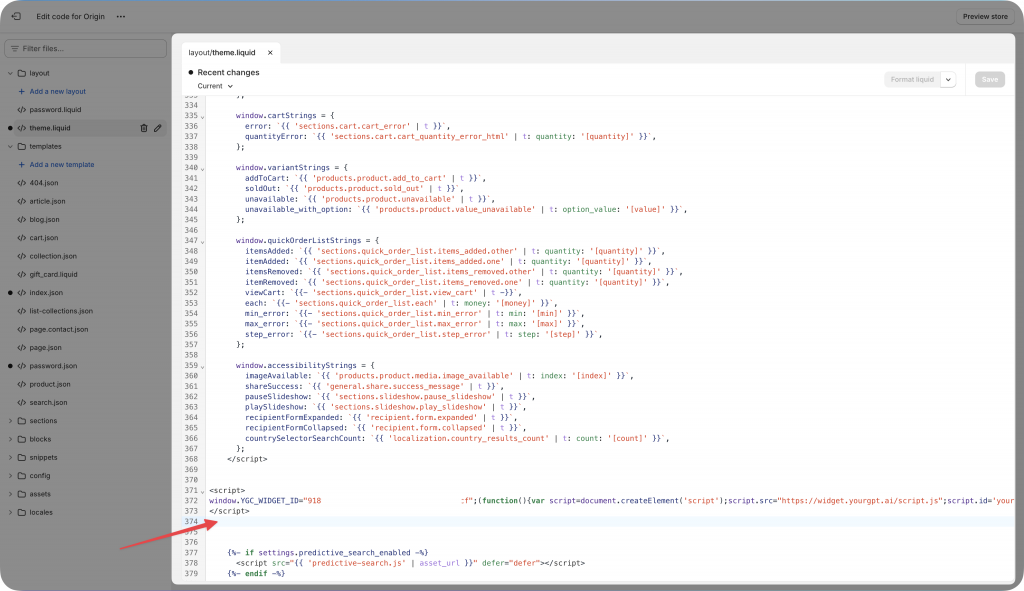
After saving, clear your Shopify cache and refresh your storefront to confirm the chatbot appears. Your AI agent should now be live and ready to assist customers in real time.
Once your chatbot is live on Shopify, connect it to other channels your customers use:
With YourGPT’s omnichannel dashboard, manage all these conversations from one place.
Shopify stores today use a mix of AI agents that quietly handle what used to take hours of manual work. These agents don’t replace teams — they make them faster and more consistent. Here’s how modern stores use them in everyday operations.
1. Product Queries That Convert Instantly
When a shopper asks about fit, material, or delivery, the product support agent answers with data straight from your catalog. Customers don’t wait for emails or support tickets, and that single instant reply often makes the difference between a bounce and a purchase.
2. Order Tracking Automation
Order-related messages still make up the majority of support requests for most stores. The order management agent connects directly with Shopify, retrieves tracking details, and updates the customer in real time — no spreadsheets, no forwarding between departments.
3. Returns That Run Themselves
The post-purchase agent handles return requests automatically. It checks order eligibility, shares instructions, and confirms timelines before passing anything complex to your team. Customers get clarity immediately, and your staff avoids repetitive workflows.
4. Saving Abandoned Carts Through Contextual Prompts
When a visitor lingers on checkout, the engagement agent steps in with relevant help — a shipping estimate, a size chart, or a small reassurance. The goal is to remove uncertainty rather than push discounts.
5. Personalized Recommendations That Feel Natural
Recommendation agents analyse what customers browse and buy, then suggest items that fit their intent. A shopper viewing running shoes might get sock or accessory suggestions that feel curated, not automated.
6. Always-Available Global Support
Support agents work across time zones and languages, offering the same consistent experience no matter where the customer is. For many growing Shopify stores, this means they can sell globally without hiring night-shift teams.
7. Feedback Collection That Feeds Real Improvements
Instead of sending post-purchase surveys that few complete, feedback agents capture short, timely insights during the conversation itself. This helps you detect product issues or delivery concerns early.
8. Lead Capture That Qualifies Before Handoff
For custom or high-value stores, sales agents greet new visitors, ask discovery questions, and pass qualified leads directly to your CRM or sales inbox. It feels like guided assistance rather than a form submission.
Together, these AI agents form an invisible workflow layer that helps Shopify stores operate with speed and precision. The result is a smoother experience for customers and a lighter load on every support channel.
Use our Chatbot ROI Calculator to estimate how much revenue a chatbot could recover for your specific store size.
AI chatbots can help your store run more efficiently, but only if they’re used the right way. Here are some common mistakes that can limit their impact—and how to avoid them.
A chatbot that only follows set rules can miss the point of a customer’s question. Choose a bot that understands natural language so it can respond clearly and adapt to different situations.
If the chatbot isn’t connected to your Shopify product or order data, it can’t answer basic questions. Make sure it pulls live info so customers get accurate, helpful responses.
Many users shop from their phones. If your chatbot doesn’t work well on mobile, it creates a poor experience. Always test on mobile before going live.
Chatbots work best when focused. Start by covering common support questions like shipping, returns, and product details. Add more features later as needed.
A generic chatbot can feel out of place. Customize its tone, responses, and appearance to match your store’s branding and voice.
Not every issue can be solved by a bot. If there’s no clear way to contact a person, customers may leave. Set up a simple way to escalate conversations when needed.
Without checking chatbot reports, it’s hard to know what’s working. Use built-in analytics to review conversations and improve responses over time.
Getting these basics right helps your chatbot stay useful, easy to use, and aligned with your store’s goals.
AI agents are quietly becoming part of how modern commerce runs. What began as simple chat interfaces is turning into something far more capable — systems that can act, decide, and connect across tools without constant supervision. The change isn’t dramatic on the surface, but behind the scenes, it’s transforming how stores operate.
A few years ago, automation meant answering FAQs or sending email updates. Today, agents can complete tasks that once required a person’s full attention. Updating order status, confirming delivery timelines, or following up with customers now happens automatically.
For ecommerce teams, this changes the rhythm of work. Response times improve, manual steps disappear, and customer conversations move faster without extra effort. What used to be a repetitive process now runs quietly in the background, freeing people to focus on strategy and growth.
AI agents are no longer limited to support queries. Tools such as YourGPT’s AI Copilot can now operate across your entire store.
This all happens within seconds. No support tickets, no manual updates.
The most capable platforms now measure success not by how many questions they can answer, but by how many real actions they can complete without human input.
What sets the best systems apart isn’t access to AI — it’s connection.
AI agents that can sync with your inventory, CRM, and analytics tools are the ones delivering consistent results.
The conversation has moved from what AI can do to how well it fits into what you already run.
Customers are no longer confined to your website. Purchases are starting inside chat apps, AI browsers, and even visual search results.
Companies like Shopify and Stripe are already building infrastructure that lets these agents access product data and process transactions directly.
Traffic from AI-powered interfaces is growing faster than traditional search. These shoppers spend more time on pages and convert at higher rates. The question for brands now is whether their store is ready to appear in those new conversations.
AI agents already handle most repetitive questions — tracking, returns, sizing — with accuracy. But human teams still play a vital role in judgment-driven or emotional situations.
The best results come from combining both. Agents manage scale, while people handle nuance.
Stores that adopt this balance report stronger retention and higher customer satisfaction, not because they removed humans, but because they let them focus on the moments that matter.
Think of it as your store’s 24/7 automated AI agent. This chatbot uses AI to instantly answer product questions, track order status, handle returns, and guide shoppers. It’s a fundamental tool for scaling customer service.
Live chat requires a human agent to be available. An AI agent or chatbot, especially a complete AI suite like YourGPT, is fully automated. It uses advanced GPT technology to provide instant, intelligent replies 24/7 and can handle unlimited conversations at once.
Yes. You can easily integrate a powerful GPT-powered chatbot, like YourGPT, into your Shopify store. This type of advanced AI agent connects to your product and order data to provide natural, human-like conversations and highly accurate answers.
Yes. A modern AI chatbot or AI agent is built to be fully responsive. It will work flawlessly on all devices, including smartphones and tablets, ensuring a consistent and helpful experience for your mobile shoppers.
No. Most leading AI agent platforms, including YourGPT, are built for a no-code setup. You can install the app, customize your chatbot’s appearance, and train it on your data through a simple dashboard—no coding required.
No, it enhances it. An AI agent acts as the ‘first line’ of support, handling the majority of repetitive queries. This AI-human hybrid model means your chatbot frees up your human agents to focus on high-value, complex customer issues.
Absolutely. A proactive AI agent is a powerful sales tool. This chatbot can use GPT technology to understand customer intent, offer personalized product recommendations, answer last-minute questions, and even help recover abandoned carts.
AI chatbots have become an essential part of how modern Shopify stores run. When set up properly, they handle everyday customer queries, improve response times, and make the shopping experience smoother while keeping support costs steady.
The real impact comes when the chatbot is connected with your store’s data and systems. Once it understands your products, integrates with your tools, and speaks in your brand’s voice, it becomes part of how your business operates each day.
For most Shopify stores, the next step is simple. It is about refining what already works and building a support system that grows with your customers.
Trusted by ecommerce businesses worldwide to handle customer queries around the clock and recover abandoned carts automatically.
No credit card required • 7 days access
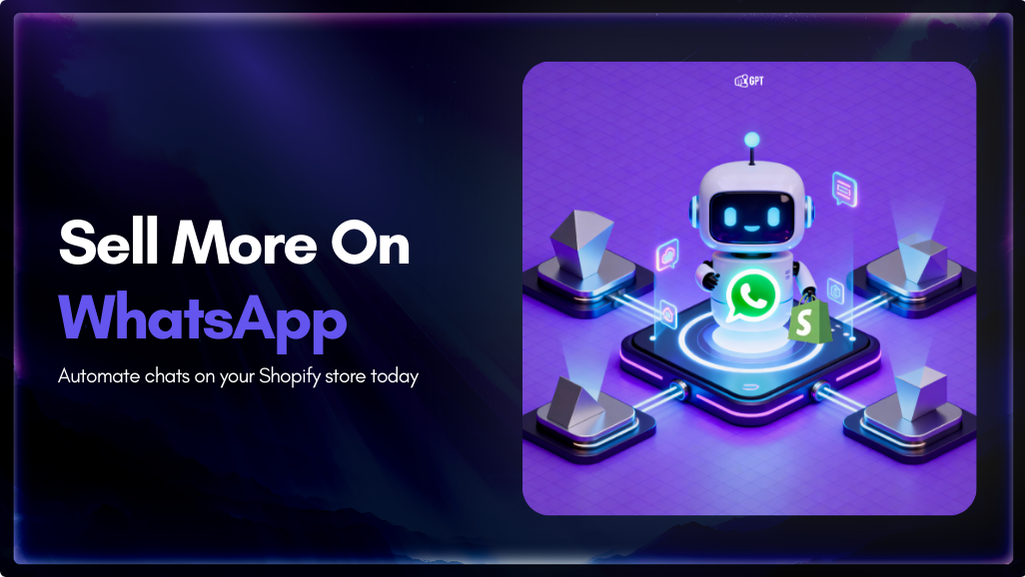
Shopify stores often use a chatbot on their website to handle product questions, order updates, and support. But customers also message on WhatsApp expecting the same quick answers. Most of them already use WhatsApp throughout the day, so reaching out there feels natural. A chatbot that works across both channels responds in seconds, guides purchase […]

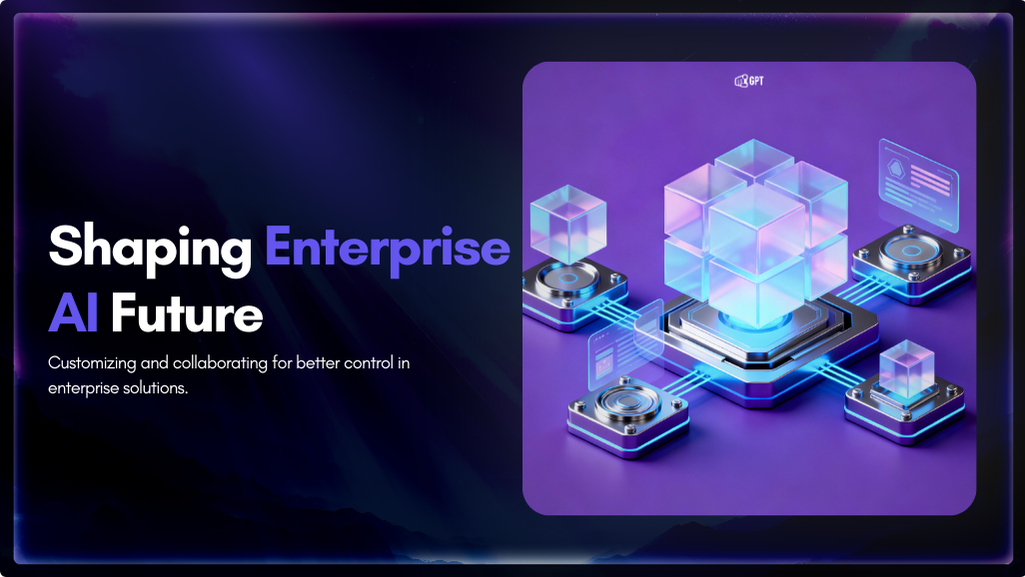
Artificial Intelligence has advanced quickly over the past five years, moving from an experiment to a standard component of modern business. AI has become a central part of enterprise strategy. 88% of organizations are now using AI. This figure has increased from 78% the year before. This transformation is reshaping how companies run, communicate, and […]

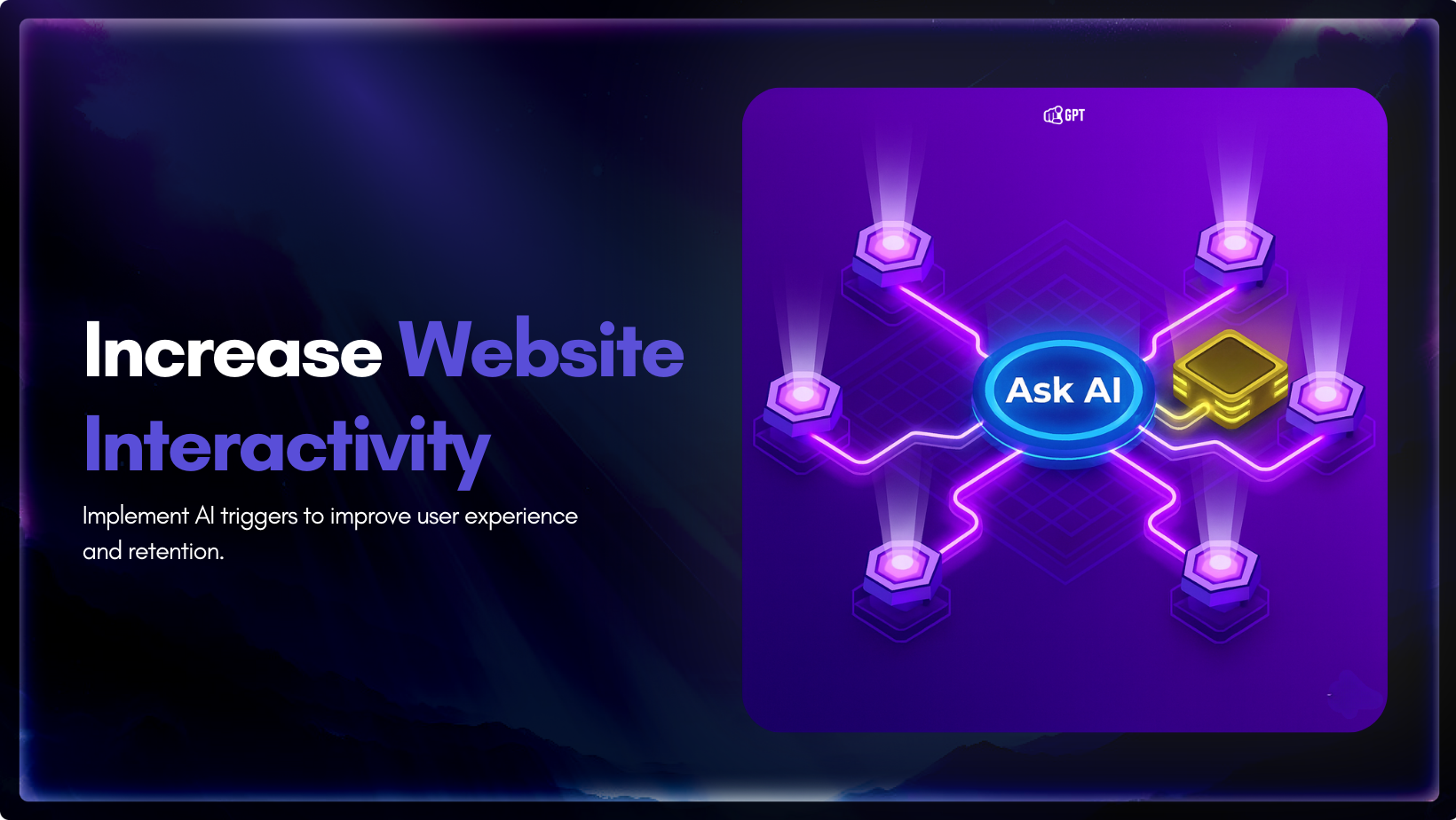
You invest time writing your website copy. You explain features, pricing, and how everything works. The information is there. Still, some visitors leave without clarity, and small gaps in understanding often stop them from moving forward. This happens because a static page cannot adjust to what they want at that moment. They skim a section, […]

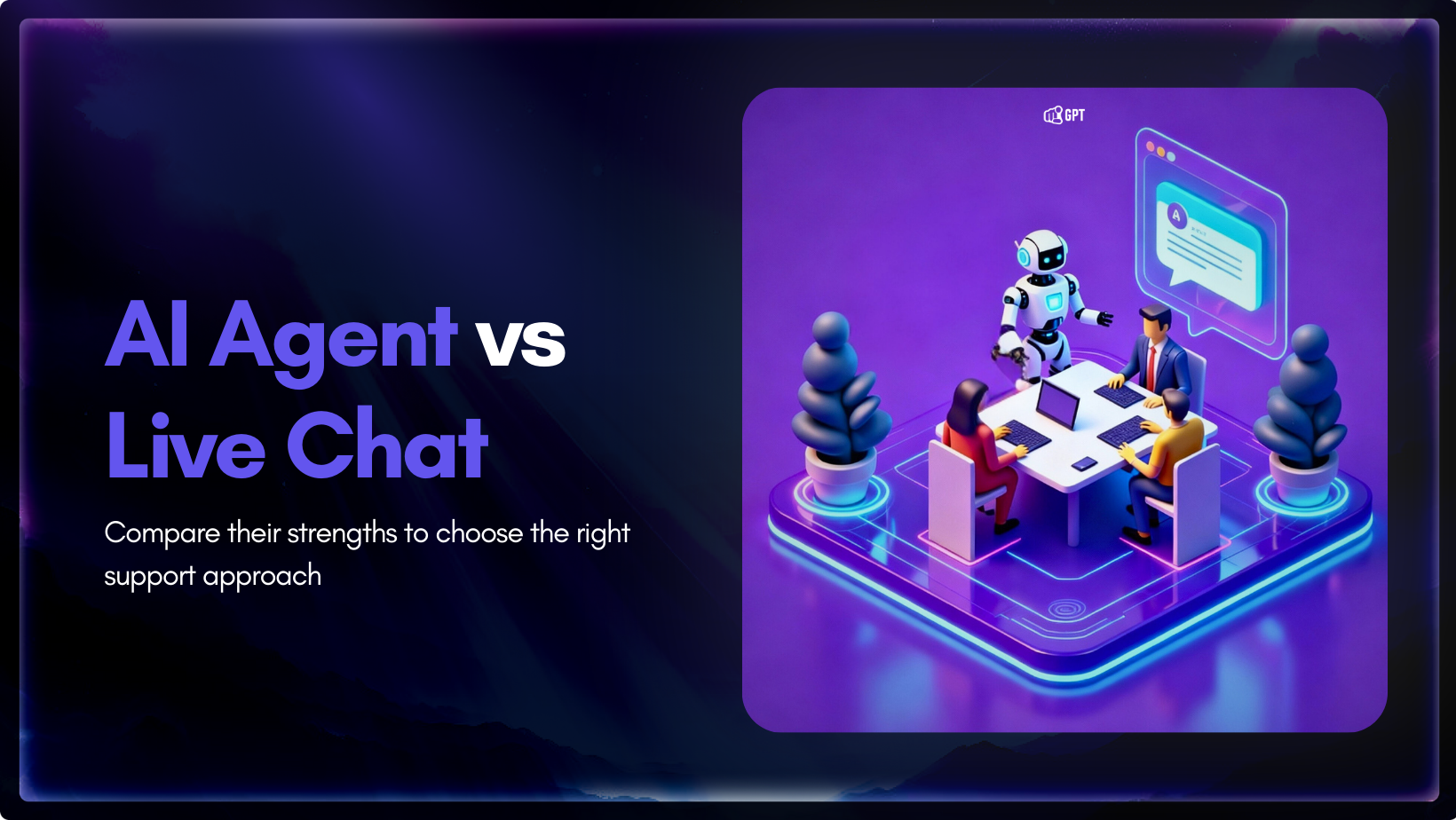
AI agent and live chat each play a different role in customer support, and the choice between them influences how a team handles growth. Companies are moving toward faster support models, and one clear trend is the use of AI to reduce operating costs by up to 30%. The difference shows up when ticket volume […]

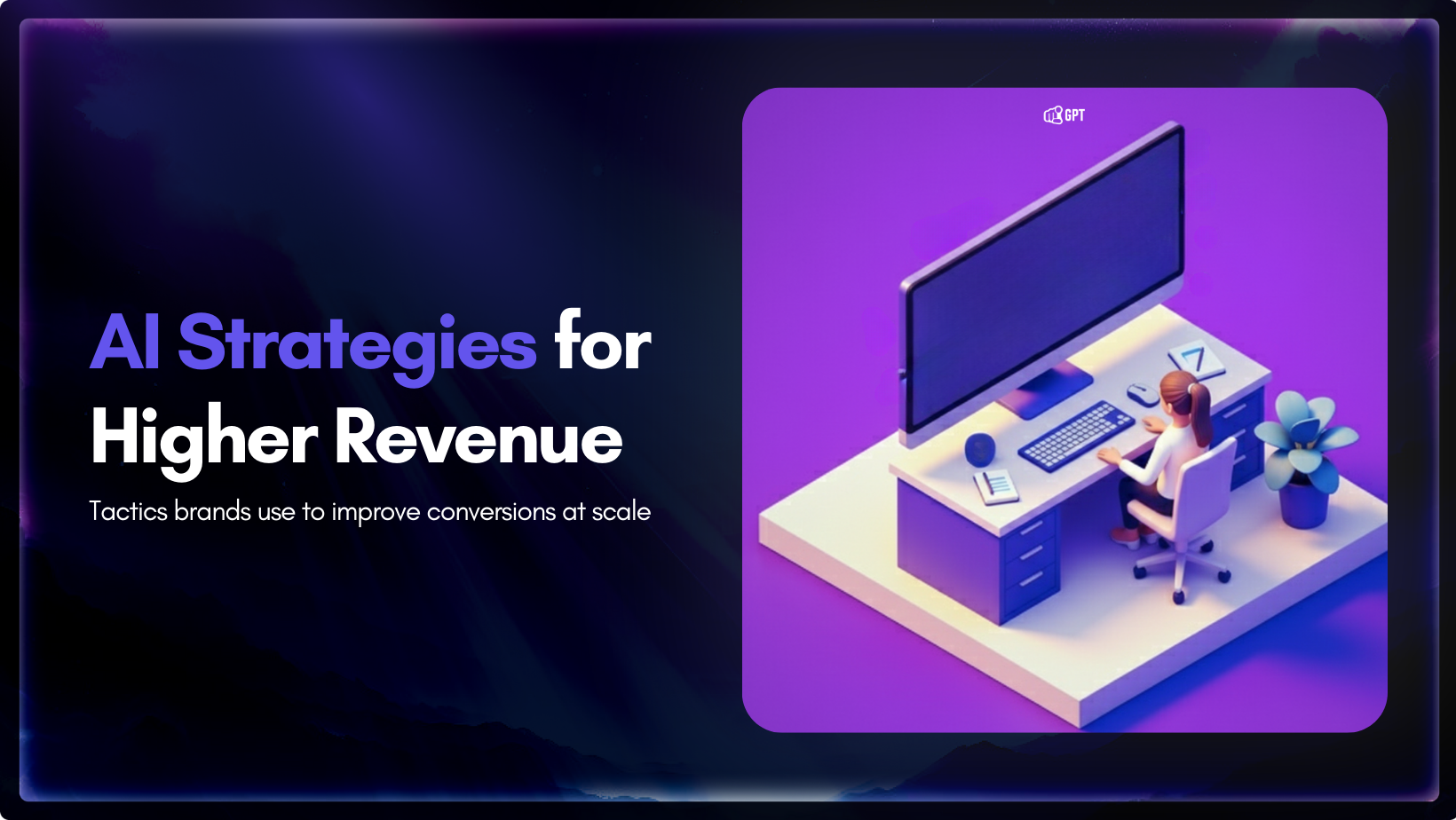
You have definitely heard about the use of AI in marketing. But have you ever seen or learned how it can actually drive revenue? Well, firms using AI in marketing and sales report significant benefits. According to a recent study by McKinsey & Company, revenue increases from AI show up most in marketing and sales, […]

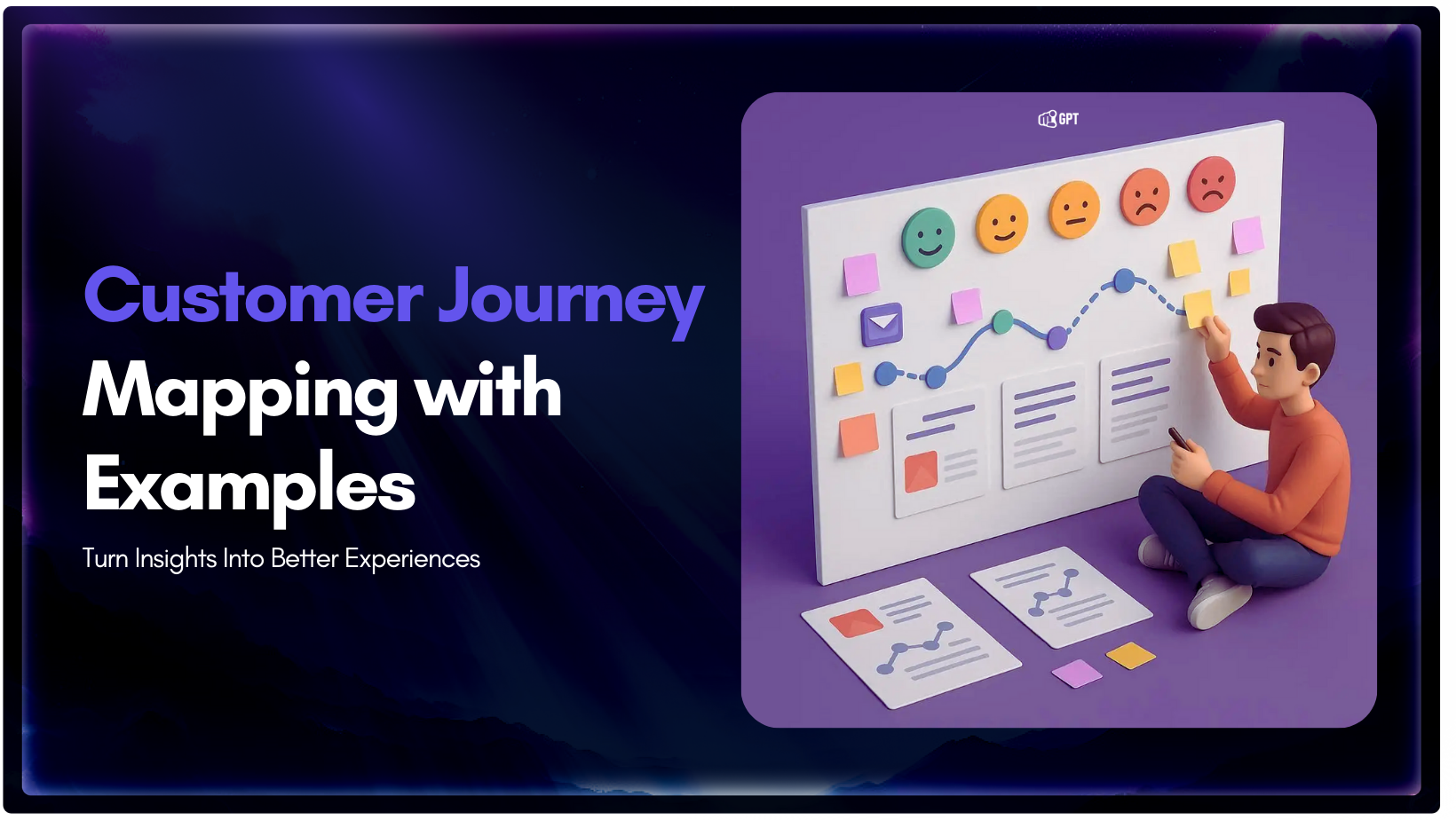
Every business talks about improving customer experience, but many struggle to understand what that experience actually looks like from the customer’s side. This is where a customer journey map becomes essential. It is a practical way to see how people discover your brand, evaluate their options, make a purchase, and decide whether to come back […]
